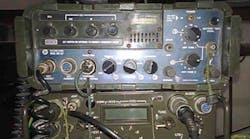In my 30-plus years of engineering, I have noticed a change that has gradually crept into the design metrics of military hardware: “Cost is important!” Where the mantra once was “it must meet these requirements at all cost,” it now applies only in certain circumstances.
For several years, there’s been a push to migrate ceramic (expensive) devices to plastic industrial devices. In applications such as guided munitions, radios, military vehicles, and other non-strategic applications, industrial-grade devices are now commonplace. In general, the concept is excellent, since many benefits derive from this migration. The major advantage, of course, is cost.
This file type includes high resolution graphics and schematics when applicable.
Plastic industrial devices are less expensive than ceramic 38510- or 883-grade standard military components. In many applications, hermetic integrity is not a requirement—no more than a commercial device would be in a consumer product. Also, the standard temperature range for industrial devices covers between –40 to +85°C, which is adequate in many military applications.
However, one thing that can jeopardize this philosophy has nothing to do with device performance. Rather, it is procurement. It surrounds the problem of obsolescence, which for military applications, where incremental orders are placed over a period of 20 years, can be a grave problem for the supplier. Once a weapon system is certified by the U.S. Department of Defense (DoD), any changes may require recertification, and that can be extremely expensive. It’s interesting to note that industrial applications have the same issue, especially medical applications with hardware certified by the U.S. Food and Drug Administration (FDA) or other governing body.
To fix this issue, you either need to use recently released devices in your design, or get some guarantee from the chip supplier that the device will be around long enough for you to retire before having to redesign your system. I favor the latter, since I only want to design something once… I’m funny that way. The good news is that some programs in the industry can provide help.
One program is the automotive Q100 rating for devices. Automotive devices typically will have better specifications and some guarantee that the supply will be available for at least seven years. They do come at a premium, but typically it’s a slight increase in cost for the benefit of a known life cycle.
Another program, Texas Instruments’ Enhanced Products (EP) portfolio, has similar advantages to the Q100 program. However, it includes enhancements for obsolescence mitigation, which extends the lifespan of the products. This can really help prevent the redesign of systems that will be in service over extremely long life cycles.
So if you want your next military (or industrial) design to stay in production for many years, search out Q100 or EP devices. Then you can look forward to your retirement without getting a call back to redesign your equipment! Till next time…


